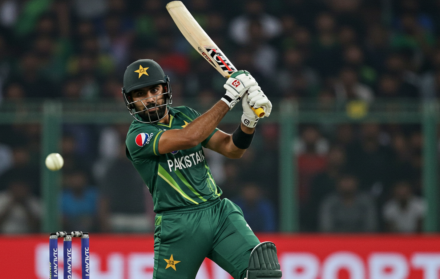
The Evolution of Cricket Stadium Architecture
The evolution of cricket stadium architecture has been a fascinating journey that mirrors the sport’s global expansion and cultural significance. As cricket has grown from a local pastime into an international phenomenon, the stadiums in which the game is played have transformed from modest grounds to iconic structures that are as much a part of the sport’s identity as the matches themselves. This evolution is particularly evident in the various architectural styles and innovations found in cricket stadiums around the world, each reflecting the unique character and history of its location.
A deep dive into the different cricket stadiums around the world reveals a rich tapestry of design and functionality. From the traditional to the modern, these venues tell the story of cricket’s development and the role architecture has played in enhancing the spectator experience. A standout example of this evolution is Headingley Cricket Ground, whose transformation over the years showcases the blend of heritage and modernity that many stadiums aim to achieve.
The global appeal of cricket has led to the creation of some truly iconic stadiums. For instance, the Galle International Stadium in Sri Lanka offers a unique setting with its breathtaking views of the Indian Ocean, making it one of the most picturesque venues in the sport. Similarly, Wankhede Stadium in Mumbai is renowned not just for its architectural prowess but also for being the stage of some of cricket’s most memorable moments.
Another legendary venue is Eden Gardens in Kolkata, often referred to as the “Mecca of Indian cricket.” With its vast seating capacity and rich history, Eden Gardens has been a witness to the sport’s evolution both in India and globally. The Wanderers Stadium in Johannesburg, known as the “Bullring” for its intimidating atmosphere, is another prime example of how a stadium’s design can influence the dynamics of the game.
In the Middle East, the Dubai International Cricket Stadium stands as a marvel of modern architecture. Its “Ring of Fire” lighting system is a testament to the innovative design approaches that are becoming increasingly common in cricket stadiums. These modern touches, combined with state-of-the-art facilities, make Dubai’s stadium one of the best in the world.
Finally, when considering the best cricket stadiums around the world, it’s clear that architecture plays a crucial role in the sport. Each stadium, with its distinct design and history, contributes to the overall experience of the game, whether it’s through enhancing the atmosphere or preserving the sport’s rich traditions.
The evolution of cricket stadium architecture reflects the sport’s journey from its humble beginnings to its current global stature. Each stadium, with its unique features and historical significance, adds to the rich tapestry of cricket, making the experience of watching the game as memorable as the matches themselves.
The Early Days: The Birth of Cricket Stadiums
Understanding the evolution of cricket stadium architecture starts with the early days when the first cricket grounds were established. In the 18th and 19th centuries, cricket was played on open fields, with little in the way of formal structures. The early cricket stadiums were simple, often consisting of little more than grassy fields with basic seating for spectators. These grounds were primarily used for local matches, with small pavilions serving as the central feature where players could change and relax.
One of the earliest cricket grounds, Lord’s Cricket Ground in London, was established in 1814 and is often referred to as the “Home of Cricket.” The original design of Lord’s was modest, reflecting the simpler needs of the time. The pavilion, which still stands today, was the focal point, providing players with essential facilities and offering limited seating for spectators. The architecture of early cricket stadiums like Lord’s was functional, with little thought given to the comfort of large audiences or the aesthetic appeal of the structures.
As the popularity of cricket grew, so did the need for more structured and permanent facilities. In the mid-19th century, cricket clubs began to invest in their grounds, constructing stands and increasing the capacity to accommodate more spectators. This period marked the beginning of a shift towards more formalized cricket stadium architecture, where the focus started to include both the players’ needs and the spectator experience.
The early cricket stadiums were deeply rooted in tradition, with many of their architectural features reflecting the social and cultural values of the time. The pavilions, often grand in design, were a symbol of the prestige associated with the sport. These structures were typically built in the Victorian or Edwardian style, with ornate facades, wooden detailing, and expansive balconies overlooking the field. While these early stadiums lacked the amenities and advanced facilities seen in modern grounds, they laid the foundation for the development of cricket stadium architecture.
The early days of cricket stadium architecture were marked by simple, functional designs that focused on meeting the basic needs of players and spectators. The construction of iconic grounds like Lord’s Cricket Ground set the stage for the evolution of cricket stadiums, paving the way for the more sophisticated and expansive designs that would follow in the 20th century. Understanding this historical context is essential for appreciating the advancements in cricket stadium architecture that have occurred over the years.
The 20th Century: Modernization and Expansion
The 20th century was a transformative period for cricket stadium architecture, marked by significant advancements in design, technology, and spectator comfort. As cricket became more popular worldwide, the demand for larger, more modern stadiums grew, leading to the construction of new grounds and the expansion of existing ones. This era saw the transition from traditional, modest structures to more sophisticated and expansive designs that could accommodate the growing number of cricket fans.
One of the most significant developments in cricket stadium architecture during the 20th century was the introduction of concrete and steel construction. These materials allowed architects to create larger and more durable structures, significantly increasing the capacity of cricket stadiums. The use of concrete and steel also enabled the construction of multi-tiered stands, providing better sightlines and more comfortable seating for spectators. This shift in construction materials marked the beginning of the modernization of cricket stadiums, allowing them to host larger crowds and more prestigious events.
The expansion of cricket stadiums during this period was also driven by the increasing commercialization of the sport. With the advent of radio and television broadcasting, cricket matches began to attract larger audiences, both in person and at home. To accommodate these growing audiences, stadiums were expanded to include more seating, improved amenities, and better facilities for media coverage. The focus on spectator comfort became a priority, leading to the inclusion of covered stands, better restroom facilities, and enhanced food and beverage options.
Another key development in 20th-century cricket stadium architecture was the incorporation of lighting systems. The introduction of floodlights allowed for day-night matches, significantly extending the playing hours and making cricket more accessible to fans who could not attend daytime matches. The first stadium to install floodlights was Eden Gardens in Kolkata, India, in 1993. This innovation revolutionized the way cricket was played and watched, leading to an increase in the number of matches and further boosting the sport’s popularity.
Stadiums built during this period also began to reflect the cultural and historical significance of cricket in their design. For example, the Melbourne Cricket Ground (MCG) in Australia, one of the largest and most iconic cricket stadiums in the world, underwent several expansions and renovations throughout the 20th century. The MCG’s architecture reflects both its historical importance and its role as a modern sports venue, with features like the Members’ Pavilion and the Great Southern Stand combining traditional design elements with modern amenities.
The 20th century was a period of significant modernization and expansion in cricket stadium architecture. The introduction of new construction materials, the focus on spectator comfort, and the incorporation of lighting systems transformed cricket grounds into the modern, multi-functional venues we know today. These advancements not only enhanced the spectator experience but also contributed to the global growth and commercialization of cricket, setting the stage for further innovations in the 21st century.
The Rise of Iconic Stadiums: Architectural Landmarks in Cricket
As cricket continued to grow in popularity, the demand for larger, more iconic stadiums increased. The late 20th and early 21st centuries saw the rise of several cricket stadiums that not only catered to large crowds but also became architectural landmarks in their own right. These stadiums were designed to be more than just sports venues; they were meant to be symbols of national pride, cultural heritage, and modern innovation.
One of the most iconic cricket stadiums in the world is the Sydney Cricket Ground (SCG) in Australia. The SCG is known for its distinctive architectural features, including the historic Members’ Pavilion and the Ladies’ Pavilion, both of which are prime examples of Victorian-era design. The stadium has undergone numerous renovations to increase capacity and modernize facilities, yet it has managed to retain its historic charm. The SCG is a perfect blend of old and new, offering a unique experience for spectators and serving as a symbol of Australia’s rich cricketing history.
In India, the Eden Gardens in Kolkata stands out as a landmark of cricket stadium architecture. Often referred to as the “Mecca of Indian cricket,” Eden Gardens is one of the oldest and largest cricket stadiums in the world. The stadium’s architecture reflects the grandeur and passion for cricket in India, with its massive seating capacity, impressive stands, and the iconic “Colosseum-like” structure. Eden Gardens has hosted some of the most memorable moments in cricket history, and its design has played a crucial role in enhancing the atmosphere and spectator experience during these events.
Another modern architectural marvel is the Sardar Patel Stadium, also known as the Narendra Modi Stadium, in Ahmedabad, India. This stadium, completed in 2020, is currently the largest cricket stadium in the world, with a seating capacity of over 132,000. The stadium’s design is a testament to modern engineering and innovation, featuring state-of-the-art facilities, a circular roof, and an efficient crowd management system. The Narendra Modi Stadium has set a new standard for cricket stadiums globally, showcasing how modern architecture can enhance both the functionality and aesthetic appeal of sports venues.
The Lord’s Media Centre in London is another example of how cricket stadiums have evolved into architectural landmarks. The futuristic, all-aluminum structure of the media center, which overlooks the pitch at Lord’s Cricket Ground, is a stark contrast to the traditional architecture of the rest of the stadium. Designed by Future Systems, the media center is an award-winning piece of modern architecture, demonstrating how cricket stadiums can incorporate innovative design elements while maintaining their historical significance.
The rise of iconic cricket stadiums in recent decades has transformed the way the sport is experienced by fans around the world. These stadiums are not just venues for cricket matches; they are architectural landmarks that reflect the cultural, historical, and technological advancements of their respective countries. The blend of tradition and modernity in these stadiums highlights the evolution of cricket stadium architecture, making them symbols of national pride and global significance.
Sustainable Design: The Future of Cricket Stadium Architecture
As the world becomes increasingly aware of environmental issues, sustainability has become a key focus in the design and construction of cricket stadiums. The future of cricket stadium architecture lies in creating venues that not only provide an excellent experience for spectators but also minimize their environmental impact. Sustainable design practices are now being integrated into every aspect of stadium construction, from the materials used to the energy consumed during matches.
One of the leading examples of sustainable cricket stadium design is The Oval in London. The Oval has implemented several eco-friendly initiatives, including the installation of solar panels, water recycling systems, and energy-efficient lighting. These measures have significantly reduced the stadium’s carbon footprint, making it one of the greenest cricket grounds in the world. The Oval’s commitment to sustainability extends beyond its physical infrastructure; the stadium also promotes sustainable practices among fans, such as encouraging the use of public transport and reducing single-use plastics.
In India, the M. A. Chidambaram Stadium in Chennai has also embraced sustainable design principles. The stadium has installed a rainwater harvesting system that collects and stores rainwater, which is then used to irrigate the pitch and maintain the grounds. This system not only conserves water but also ensures that the stadium remains green and functional during dry seasons. Additionally, the stadium has implemented waste management programs to recycle and reduce waste generated during matches.
Another stadium leading the way in sustainable design is the Adelaide Oval in Australia. The Adelaide Oval has incorporated several green initiatives, including the use of low-energy lighting, sustainable building materials, and an advanced water management system. The stadium’s design also maximizes natural light and ventilation, reducing the need for artificial lighting and air conditioning. These features not only reduce the stadium’s environmental impact but also create a more comfortable and enjoyable experience for spectators.
The future of cricket stadium architecture will likely see even more emphasis on sustainability, with new technologies and innovative design practices playing a crucial role. For example, the use of green roofs and living walls could become more common, helping to reduce heat absorption and improve air quality around stadiums. The integration of smart technologies such as energy management systems and real-time data monitoring will also allow stadiums to optimize their operations and minimize resource consumption.
Sustainable design is set to play a central role in the evolution of cricket stadium architecture. As environmental concerns become increasingly important, cricket stadiums around the world are adopting eco-friendly practices to reduce their impact on the planet. These sustainable design initiatives not only help protect the environment but also enhance the overall experience for spectators, ensuring that cricket stadiums remain relevant and responsible in the years to come.
Cultural Influence: How Local Traditions Shape Cricket Stadium Design
The design of cricket stadiums is often influenced by the local culture and traditions of the regions in which they are built. These cultural elements are reflected in the architecture, materials, and even the layout of the stadiums, making each venue unique and representative of its surroundings. Understanding how local traditions shape cricket stadium design adds another layer of appreciation for these architectural marvels.
In India, cricket stadiums are often designed to reflect the country’s rich history and cultural diversity. For example, the Rajiv Gandhi International Cricket Stadium in Hyderabad incorporates elements of traditional Indian architecture, with its grand entrance inspired by the historic Charminar monument. The use of locally sourced materials and intricate detailing in the stadium’s design pays homage to the region’s architectural heritage, while also creating a sense of pride among local fans.
Similarly, the Galle International Stadium in Sri Lanka is a prime example of how local culture can influence cricket stadium design. Located near the historic Galle Fort, a UNESCO World Heritage site, the stadium offers stunning views of the Indian Ocean and the fort’s ancient ramparts. The stadium’s design is understated, allowing the natural beauty of the surroundings to take center stage. The use of local materials and traditional building techniques ensures that the stadium blends seamlessly with its historic setting, creating a unique and culturally significant venue.
In England, cricket stadiums often reflect the country’s long-standing traditions and love for the sport. Trent Bridge in Nottingham, for instance, is known for its classic English architecture, with its elegant pavilion and traditional red-brick stands. The stadium’s design exudes a sense of history and tradition, making it a beloved venue for both players and fans. The inclusion of modern amenities within this traditional framework demonstrates how cricket stadiums in England balance heritage with contemporary needs.
The influence of local culture on cricket stadium design is also evident in the Newlands Cricket Ground in Cape Town, South Africa. Nestled at the foot of Table Mountain, the stadium offers breathtaking views of the surrounding landscape, with the design emphasizing its connection to nature. The use of natural stone and wood in the construction reflects the region’s natural beauty, while the layout of the stands ensures that spectators can enjoy panoramic views of both the match and the mountain backdrop. Newlands is a testament to how cricket stadiums can be designed to celebrate and showcase the unique characteristics of their location.
Cultural influence plays a significant role in shaping cricket stadium architecture. From the use of traditional materials and designs to the integration of natural landscapes, cricket stadiums around the world reflect the local traditions and cultural heritage of their regions. This cultural connection not only enhances the aesthetic appeal of the stadiums but also creates a sense of identity and pride among local fans, making each cricket ground a unique and meaningful place.
The Role of Technology in Modern Cricket Stadiums
Technology has become an integral part of modern cricket stadium architecture, enhancing the experience for both players and spectators. The integration of cutting-edge technology into stadium design has transformed the way cricket is played and watched, offering new levels of convenience, entertainment, and engagement. From advanced scoreboards to state-of-the-art broadcasting facilities, technology is playing a crucial role in shaping the future of cricket stadiums.
One of the most significant technological advancements in modern cricket stadiums is the use of LED scoreboards and displays. These high-definition screens provide real-time information, including scores, player statistics, and match highlights, ensuring that spectators are always up to date with the action. The vibrant displays also enhance the atmosphere within the stadium, adding excitement and energy to the live experience. In addition, these LED screens are often used for advertising, generating revenue for the stadium and contributing to its financial sustainability.
Another important technological feature in modern cricket stadiums is the implementation of smart ticketing and entry systems. These systems streamline the process of entering the stadium, reducing wait times and improving security. Fans can now purchase tickets online, receive them digitally, and enter the stadium using QR codes or contactless technology. This not only makes the experience more convenient for spectators but also allows stadium operators to manage crowds more effectively and ensure a smooth flow of people throughout the venue.
Broadcasting technology has also seen significant advancements in cricket stadiums. The introduction of high-definition and ultra-high-definition cameras has revolutionized the way cricket is broadcasted, providing viewers with crystal-clear images and close-up shots of the action. These cameras are strategically placed around the stadium to capture every angle of the game, from the bowler’s run-up to the batsman’s shot. In addition, drone cameras and spider cams have added a new dimension to cricket broadcasting, offering unique aerial views and dynamic footage that enhance the viewing experience for fans watching at home.
For players, technology has improved training and performance analysis. Many modern cricket stadiums are equipped with Hawk-Eye technology, which tracks the trajectory of the ball and provides detailed data on player performance. This technology is used not only during matches for decision-making but also during practice sessions to help players refine their skills. The availability of such advanced tools allows teams to analyze their performance in real-time and make informed decisions that can impact the outcome of the game.
Technology has become a driving force in the evolution of cricket stadium architecture. The integration of advanced scoreboards, smart ticketing systems, and cutting-edge broadcasting technology has enhanced the overall experience for spectators and players alike. As technology continues to evolve, we can expect cricket stadiums to become even more sophisticated, offering new and innovative ways to engage with the sport. The role of technology in modern cricket stadiums is a testament to the sport’s ability to adapt and grow, ensuring that cricket remains relevant and exciting for future generations.





